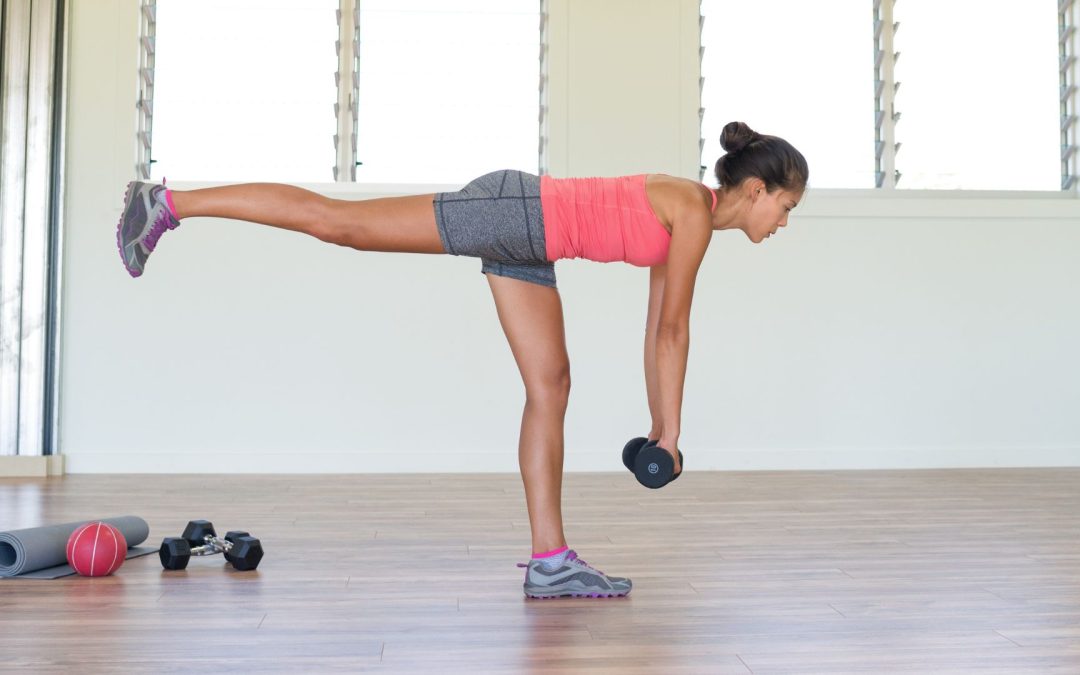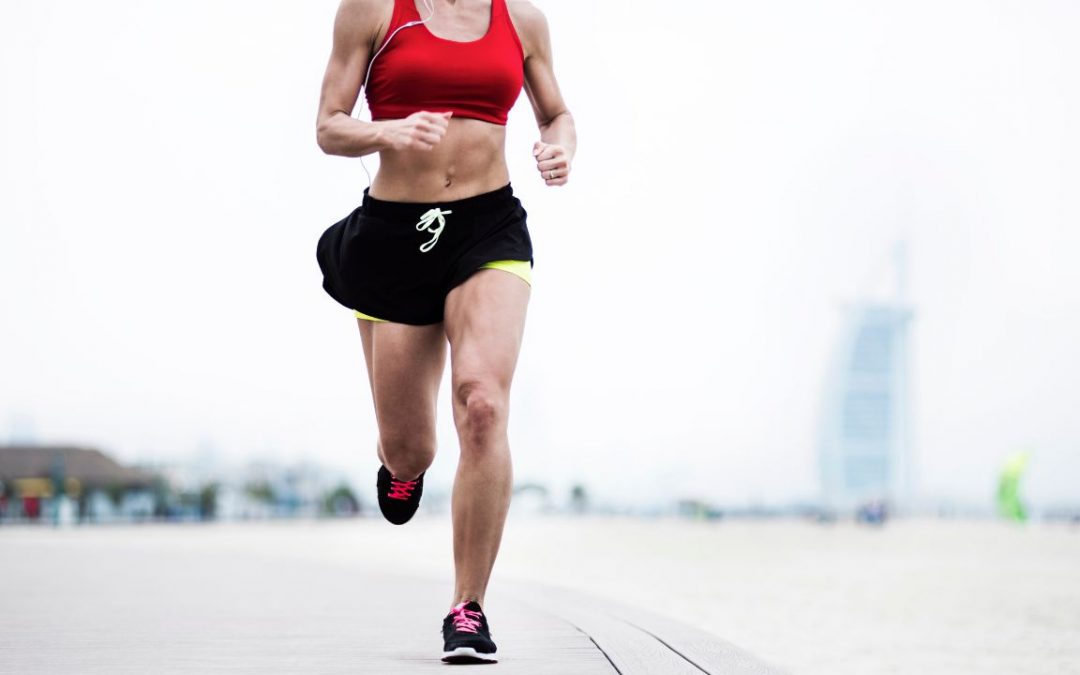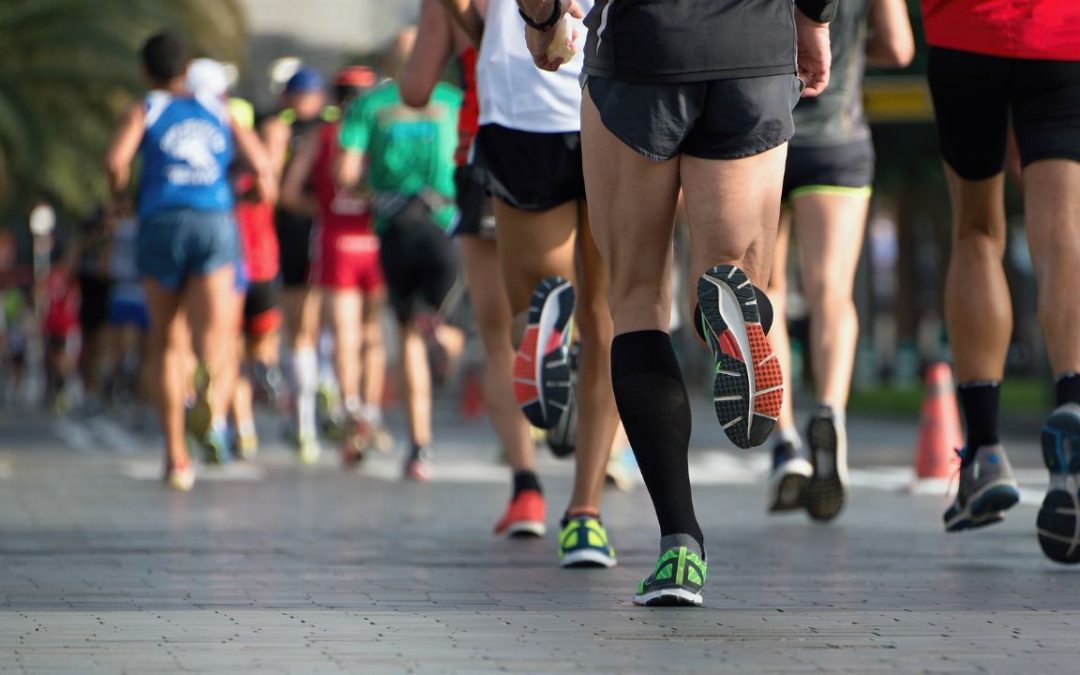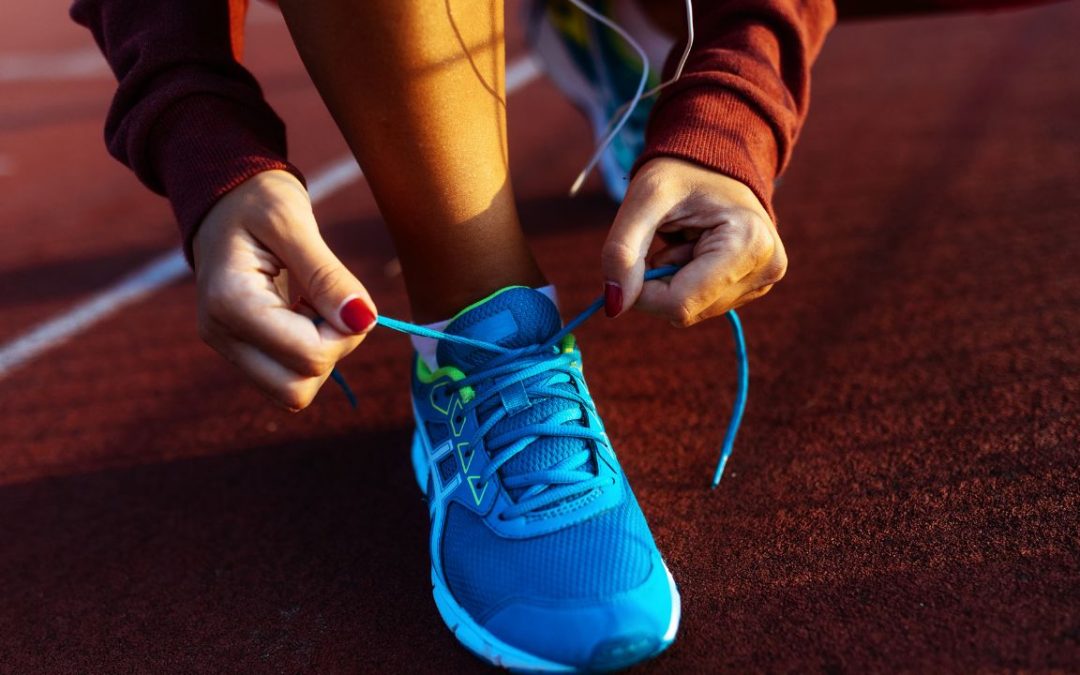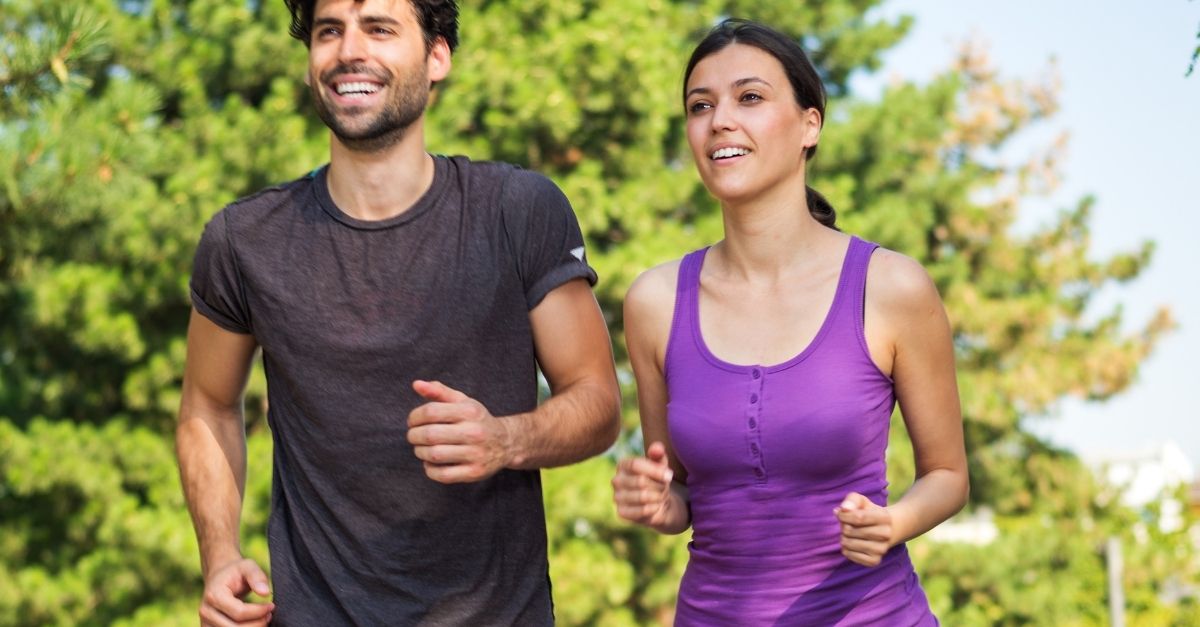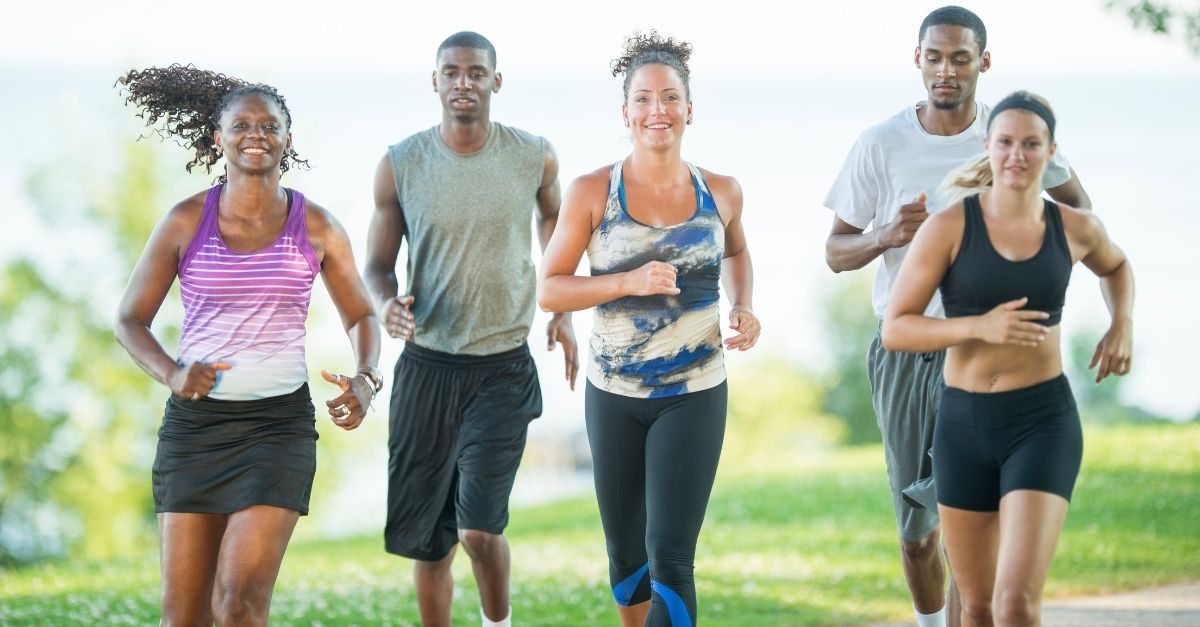[maxbutton id=”6″ url=”https://runsmartonline.com/try-runsmart” text=”Run Stronger – Try These Workouts ($1)” ]
—Video Transcript—-
Hey there everyone. Steve Gonser, physical therapist here. Trying to stay faithful with doing a lot of lives this January to help everyone get ready for a good 2019 season, give you guys some tips and tricks to make the season even better and you can avoid injury. We know that 80% of runners are hurt every year. You do have some control over that. I always tell runners that there’s a good chance you’re gonna get hurt, but if you’re frequently hurt, that is an issue either with your training plan, with your strength training or with a lack thereof, or just the fact that you don’t know when to stop. I wanna cover something. I’m gonna show you guys an exercise in this because in the last video, if you haven’t seen any of my other videos, I’ve been going live all month to help try to get everyone in the right mindset for smarter training this year, but if you haven’t checked out any of my other videos you can go to the video section on the RunSmart Facebook page and you can see a lineup of those. The last one, you’ll see that I had no voice. Sorry to say that it came back, for some people.
That is where I want everyone to start, is by looking at some of those videos. We’ve been talking a lot about smarter training, so I’m gonna show this. I’m in the clinic right now. This is, let’s see if I can get that right, what we’ve been talking about. This is how we train our runners, using this new tool we built that can build you a complete training plan. I’m gonna show you this quick and then we’re gonna talk about the exercise and go from there. I talked about it before. I’m in a maintenance plan. We did full marathon last time. Let’s go back to a half marathon. What this does essentially is it lets you build up a plan based on a race that you wanna run. Here, we have weeks of training. I like the 16 week training. I’m in the states. I’m like Simon. Hi, Simon. We’re at miles there. And then, I like to do, it’s called a 40 week plan. We give you an option to start on a Sunday. And then, we give this really cool bar where you can make your plan harder or easier. I’m out of shape, so I’ll just say that.
We build this plan. If you’ve seen any of my videos on the training acts, this is what usually everyone does. 59. 59. Go. Making myself dizzy with this. What this does is essentially builds you your training plan using a couple different things that I’ve been talking a lot about. Your run way. How do you get into your training plan without getting hurt, so you’re prepared. Essentially, it gives you all your mileage, your pacing. You can move around days, stuff like that. But, the two to one principle is worked in here. You’ll see this. This has a little bit of a build on the front end, but then we would drop down to next week. That two to one principle that is really effective, that I talk about quite often, allows you to build your mileage with two weeks on and one week off. We do that for all of our runners in here. Let’s close this.
Some really cool things. This little flame icon does not help right now, because what that does is it actually ties into the weather of your local area and if it’s really hot out will actually change your training based off of that little flame icon. Super popular over the summer. This little thing just allows you to rearrange your days. So, a lot of control. But, what I’m really here to talk about is the strength training. Let’s see what we have on tap for this day. That’s a form rolling day. Let’s go to a Monday. It’s really hard to run this thing and do this. That’s the notes section. We do this base six day one. What we really wanna talk about is your strength training. In our training plan, we will take you to a workout that looks just like this. It can’t zoom in or out or anything. Oh, God. There we do. A strength workout that would help you in your training. Trouble is, a lot of people aren’t doing strength training. I talked about it last time. I’m gonna hook this up while I talk. You wanna be focused on building … what I talk about is more strength here and then strength in the backside. That’s where you want to start.
Essentially, let me get rid of some ceiling here, running is effectively standing on one foot and then standing on the other. Simon Ward just wrote, that’s from Jimmy Fallon, #buttback. We’re gonna talk about that in a minute because that is super important. Running essentially is standing on one foot and then standing on the other foot. I showed a little rendition of a guy running. He was coming down, he was here, and all that weight is on his stance leg. That’s how we wanna strength train. We wanna be in a stance position. We do a lot of strengthening here for our runners in our training plan, but let’s take a step back from that. I wanna show you guys something that gets really butchered in the clinic, because when I do this with runners, they always do one thing. They say this is why I run. Or, they just feel awkward or clumsy doing this exercise, which is a simple squat. Before we get you into one leg, and go ahead and try this. Can you even throw me a like or a sad face if you can’t even stand on one foot and maybe even just touch your opposite foot without falling over? You get one try at it, too. You can be like … Sad face if you can’t do it, like if you can.
If you want to start building strength, we don’t want to just go right, maybe necessarily, into this. We wanna start with something a little bit easier, which is a squat, then maybe some lunging. Still haven’t got rid of my cough yet. In the next video, I’m gonna talk about lunging in a way that you guys can lunge smarter so you don’t bang up your knees. Everyone things a lunge is really bad for the knee. I’m gonna tell you, they’re not if you do them right. We’ll talk about that in a future video, but I wanna show squatting. The first thing we’re gonna do is, as far as foot position … Oh man, I love January, when everyone’s inside. We’re gonna do feet shoulder width apart. This is really the standard start position for a squat. You wanna make sure when you’re doing this that you’re not too narrow. Some people will toe out and if I ask them to straighten out their feet it feels like they’re doing that. That could be somewhat structural or it could be somewhat your fault. But, you wanna generally have your feet facing straight ahead. It’s okay to be a little toed out, but you shouldn’t be massively toed out. You’re not riding a horse.
Feet shoulder width apart. What most runners do is, I ask them to squat and they either do this to the ground and come back up. Really out of focus there. Let my camera catch up. There we go. Or, they drive their knees forward. That’s really the thing I see the most, is those knees go forward. If you look at the center mass, look at my hands. This is where my weight’s falling. It’s far behind the knee. What ends up happening, if you just go ahead and hold that position, if you wanna give this a try quick. You stand, hold this position. What you’re gonna feel is a lot of pressure on the front of the knee if you hold it long enough. What’s happening there is you’re essentially taking your thigh and trying to slide it off the front of your shin, so the quad really has to contract, and contract hard. Instead of doing that and driving your knees forward, we wanna focus on butt strength, hip strength, glute strength, whatever you wanna call it. We wanna tap into the backside. Simon wrote this with a hashtag, buttback.
Here is how I want you guys to think about squatting, because you can use this for your warm up, you can use it for a cool down, you can use it however you want. But, if you’re not doing this right, it really doesn’t matter if you’re doing lunges or single leg activity working on strength. Focus on this. You wanna keep these shins nice and vertical. A little, small arch in your back. And, you wanna drive your butt backwards, the chest coming down. Look at the bend in my knee. I have a bend, but if you look at the orientation of my shin, they’re relatively vertical. What that gets for you is a lot more hip activation. Now, this and my low back are holding me up and it’s not like I have a ton of pressure going towards the front of my knees. I’m driving that butt back, keeping the spine straight and coming up. You get a lot better hip activation with the butt going backwards. You almost wanna think about hinging from the hip right up front. By doing that, it’s super crucial. It’s gonna help you because in the next videos I’m gonna talk about some other exercises you can do that really depend on your ability to hinge.
Let me show you a progression for that after I cough one more time. The progression would be, obviously you can use some weights. You can do some reaching down with weights and pressing up overhead. But, here’s a better one, because you don’t necessarily need to get really big to run well. You just need to be able to control your body weight. You’re not running with a lead vest, although I have seen a lot of people do that. Here’s your progression. You wanna start progressing towards that balancing on one foot. I like to have my runners squat, balance on one foot, and then squat, balance on the other foot. From the side, squat butt back, up and balance. I like to adopt this figure four position, because that’s the running posture for people. So, you would squat, up and balance, squat, up and balance. Now, I’ll tell you how people usually cheat with this before I finish up here. What they generally like to do is they like to squat, come up, and they either throw themselves out of picture or what they end up doing is they go so quick that they can’t stabilize that squat.
Really, you should be squat, up and balance and find your center. If this is pretty easy and you’re doing this with your arms, what are you doing? You’re not using your core, your glutes, your foot and ankle for balance. You’re using your arms. We see this a lot with runners. They run and they got these really wide arms when they’re running. Instead, you can hold onto a ball, hands on your hips. Squat, up and balance. Now you can’t get your arms, so as you’d start to lose your balance, you would find it from your lower body rather than crossing the Niagara Falls on a tightrope. That’s a Buffalo reference. I realize that not everyone’s from Buffalo. But, start thinking about that. Start using the squat go to one balance. If you think that’s pretty easy and you’d rather just have us give you our strength workouts, you can go to, I think I posted it in this, if I didn’t I will repost it, runsmartonline.com/train.
There’s actually full workouts, just like you saw. You can build your training plan and get all the access to all the strength workouts just for a $1 trial. Hopefully, this helps. If you haven’t seen the other videos, go to the Facebook page of RunSmart. Actually, click the low O and look at the video section. There’s a lot more in there. Just be on the lookout because I’m gonna send a lot more videos. Next time, we’re gonna be talking about lunging. Hopefully everyone has a great night. Any questions, hellos. I will talk to you guys soon. Thanks. Bye.
[maxbutton id=”6″ url=”https://runsmartonline.com/try-runsmart” text=”START YOUR $1 TRIAL HERE” ]

